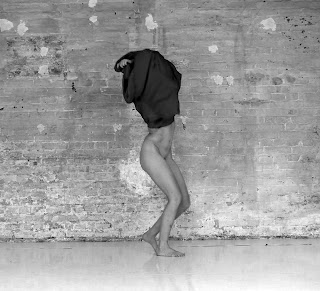The "Die Welt als wilde Vorstellung" performance project is conceived from the desire to redefine dance out of its current artistic ghetto and to give it the ambition to reach again an open audience. Art is tautological by essence, so it is not really necessary to emphasize exclusively on this dimension and lose the possibility to address an audience which is not dedicated to the sharpest art research. This doesn't mean that our work is not sharp, demanding or experimental, this means that we don't want to restrict our work to an endless manifestation of the latest trend of "l'art pour l'art" while television is the media that has to deal explicitly with the 21st century forms of the great invariants of human culture: death, sex, love, magic, power, struggle...
In our artistic itineraries, we also encountered other cultures where dance keeps its cathartic role – together with music and theatre –, and provides a strong support to unifying myths. Witnessing either the various forms of Asian opera (Noh, Kabuki, Katakali, Ramayana, Chinese Opera...) or community dances in Africa and South-America have made obvious a lack in Western culture – where presumptuous modernity together with Judaeo-Christian rejection of physicality generated a poor choreographic drive.
We didn’t base our process on ethnological studies but on our understanding and feeling as art involved audience of what we saw of traditional dance and music theatre. Mainly from Asian forms we gathered some elements that we intend to renew and adapt for contemporary western stage: a narrative line – though quite abstract and essentially known beforehand by the audience – involving myths related to essential moments of human lives ; a real conjunction of dance and music with live musicians on stage ; the expressivity of dance and play linked to stylization and the establishing of a evocative dance vocabulary ; the use of elaborated costumes, masks, make-up, props and sets to set identifiable and strong characters.
These elements are to be found also in western culture, though not in the dance scene – but on television, cinema, also in rock concerts and carnivals. So of course we don't intend to imitate traditional eastern theatre but to identify the elements we need to elaborate a cathartic performance in our own post-modern European culture. For example, vampires are recurrent characters of main narrative productions in the last 15 years, pornography settled itself as a new autonomous culture (maybe the most recent original creation of the early century – whether you like it or not), in the same period, politicians are using the most regressive rhetoric directly from pulp comics to justify their wars… This tells a lot about us, but why should this be told only by the cheap propaganda of dominant medias? It is of our responsibility to feed this to performing arts and explore at the most sensitive levels the deep correlates of such things and bring the result to the audience through demanding dance and music.
Our dance is rooted in post-(post-)modern dance practice, non-European traditions, pop culture and radical experimentation. The creators of Real Dance Super Sentai have in common to have practised Body Weather (a creative dance technique initiated by butoh dancer Min Tanaka and taught a. o. in Body Weather Amsterdam) and to value rock culture as the highest manifestation of the modernist project. This background led us to work far from pre-established and abstract dance forms and reach for expressionism and authenticity. Though our agenda is significant, joy and physicality are the drives that will carry the whole project – providing to the audience an intense and multifaceted experience.
"Die Welt als wilde Vorstellung" is based both on the millenary model of the quest saga and the staging of a rock concert. A main heroic character will be confronted to various situations (some directions: the rape, the penis contest, the riot, the fight with the giant white crocodile...) easily readable but without more meanings than the ones the audience will be willing to put in them. The musicians sharing the stage with the dancers are both the antic choir and providers of an intense soundtrack. Contemporary narrative has been improved by experimentation in novels or cinema, and new media such as video games or internet surfing, and is no longer limited to linear telling, and we will keep this saga open to the widest understanding.



















































